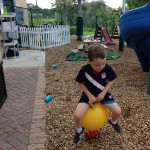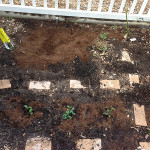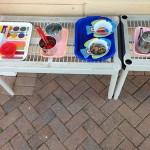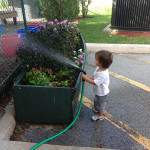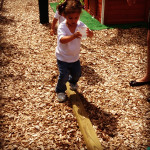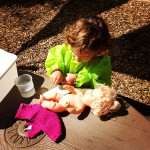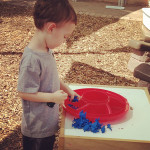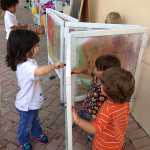Blog
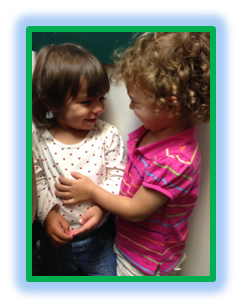 I know many of you, who have a child or are in the educational field, at one point or another have felt as you do not have the tools or maybe felt loss on how to handle specific situations with a toddler. Someone shared this article with me, I don’t know who wrote it; but the thought is far more worthwhile and valuable so I wanted to share it with all of you, and maybe help you when you are in one of those moments
I know many of you, who have a child or are in the educational field, at one point or another have felt as you do not have the tools or maybe felt loss on how to handle specific situations with a toddler. Someone shared this article with me, I don’t know who wrote it; but the thought is far more worthwhile and valuable so I wanted to share it with all of you, and maybe help you when you are in one of those moments
Limit Setting for less than three years olds is really reliant upon the creativity, belief system and ingenuity of the assistance to infancy caregiver.
The safe, prepared and developmentally appropriate environment, the attitude and consistency of the staff and predictability of the environment, all play an important role in allowing for the child to find a positive outlet for his/her own unique expression of self.
Therefore, “no’s”, negative reinforcement ad “time out” (asking a child to wait when the developmental stage is oppositional to that comprehension) has no place in the management of the young child. Engaging the child in activities that are developmentally appropriate and redirecting the child are strategies that are more successful in working with children less than three years. Offering choice around activities and situations offset many potential power struggles.
Language is another powerful tool that can be utilized effectively. For instance, stating behaviors you want to occur instead of reiterating and reinforcing the negative behavior will be more helpful in helping the child to clearly understand expectations. Telling the child what you are going to do before you do it helps prepare the child who needs more time to be compliant.
Few, simple and clear house rules will allow for the child to gain understanding of how he needs to act in a given situation, Explaining simply what is expectable, i.e., “I don’t like it when you step on my feet. It hurt me”, is language that explains and helps the child understand reality.
Preparation, language, understanding of the developmental stage and the caregivers’ faithful belief in the positiveness of human nature are key strategies for developing a caring and safe environment where appropriate choice and limits can be safely carried out.
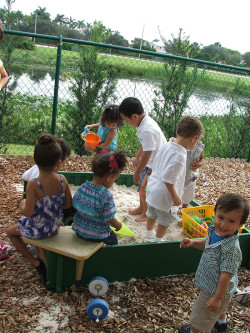 By definition “ A playground, is a place with a specific design for children to be able to play there. It may be indoors but is typically outdoors. Some playgrounds often have recreational equipment such as the seesaw, merry-go-round, swing set, slide, jungle gym, chin-up bars, sandbox, spring, monkey bars, overhead ladder, trapeze rings, playhouses, and mazes, many of which help children develop physical coordination, strength, and flexibility, as well as providing recreation and enjoyment.” When I was teaching I always wanted to have a playground where the children could have an extension from the inside, a place for the children where they could have things to do. Not always the children are in the mood for be running or chasing each other, which I know they love to do it. Sometimes they just want to do something quieter and enjoy to be outside. That’s why we designed a playground that meet all this. In our playground, the children can choose from more than 20 activities. We have practical life lessons where they can wash a toy boat or a baby, or maybe do some pouring or sorting. We have for the gross motor skills, walking shoes, walking on a wood beam, and many other different lessons. The can paint or maybe do some arts if they feel this is what they want. If they want to do some sand, they can just jump in the sand box and play in there. Maria Montessori had a quote “ A child needs freedom within limits” based on that we want to follow the child instinct, and helping him with some discipline to make his own decisions.
By definition “ A playground, is a place with a specific design for children to be able to play there. It may be indoors but is typically outdoors. Some playgrounds often have recreational equipment such as the seesaw, merry-go-round, swing set, slide, jungle gym, chin-up bars, sandbox, spring, monkey bars, overhead ladder, trapeze rings, playhouses, and mazes, many of which help children develop physical coordination, strength, and flexibility, as well as providing recreation and enjoyment.” When I was teaching I always wanted to have a playground where the children could have an extension from the inside, a place for the children where they could have things to do. Not always the children are in the mood for be running or chasing each other, which I know they love to do it. Sometimes they just want to do something quieter and enjoy to be outside. That’s why we designed a playground that meet all this. In our playground, the children can choose from more than 20 activities. We have practical life lessons where they can wash a toy boat or a baby, or maybe do some pouring or sorting. We have for the gross motor skills, walking shoes, walking on a wood beam, and many other different lessons. The can paint or maybe do some arts if they feel this is what they want. If they want to do some sand, they can just jump in the sand box and play in there. Maria Montessori had a quote “ A child needs freedom within limits” based on that we want to follow the child instinct, and helping him with some discipline to make his own decisions.
Our playground invites the child to admire, respect and take care of the environment as an area of the Montessori curriculum, in our little garden we have planted tomatoes, cucumber, and even some corn, that children need to water.
That is why our playground is more than a designed place, it is a place where we help to build stories and memories, is a place where the imagination goes beyond.
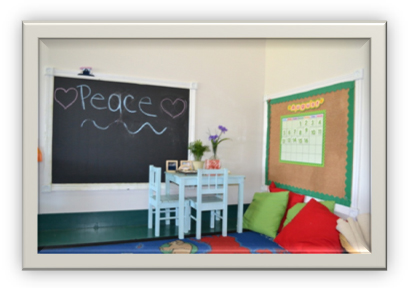
As a school director one of the biggest challenges I encounter is searching for ways to help teachers prepare and create a proper environment for their students. While working at my office I can hear children crying either because they have difficulties understanding and grasping the idea that THIS is their new place, our “children’s house” as Maria Montessori called it, or they are crying just because they are having a bad day. It is then that I start looking for solutions, and “The Peace Table” comes to my mind. This is the place that will enable children to: take a break whenever they feel like having one, have a conversation with a child helping him/her find a way to apologize to a friend if he/she hurt someone’s feeling.
This Peace Table was introduced in our classrooms and we have scattered on that table the following objects:
- A Chinese Garden
- Some sea shells
- Water Blocks
- A flower (for the kids to smell)
- Labyrinth cards
- Lavender lotion (for kids to rub their hands and smell)
Yesterday one of our little students had a hard time adjusting to class so one of the teachers just offered her to take a break and go and sit at the Peace Table. She did, she played with the objects on it, and when feeling more relaxed and ready she returned to class. She was asked to do the Metal Insets lesson and she actually finished the whole booklet.
The Peace table is not only a tool to help kids concentrate, it can also help children to talk about things that bother them, it is a safe place for them, a place that will give them peace, a place to retreat when they child feels he/she needs.
“The child who has felt a strong love for his surroundings and for all living creature, who has discovered joy and enthusiasm
in work gives us reason to hope that humanity can develop in a new direction.
“Our hope for peace in the future lies not in the formal knowledge the adult can pass on to the child, but in the normal
development of the new man.”
–DR. Maria Montessori
Education and Peace, page 58
 I know many of you, who have a child or are in the educational field, at one point or another have felt as you do not have the tools or maybe felt loss on how to handle specific situations with a toddler. Someone shared this article with me, I don’t know who wrote it; but the thought is far more worthwhile and valuable so I wanted to share it with all of you, and maybe help you when you are in one of those moments
I know many of you, who have a child or are in the educational field, at one point or another have felt as you do not have the tools or maybe felt loss on how to handle specific situations with a toddler. Someone shared this article with me, I don’t know who wrote it; but the thought is far more worthwhile and valuable so I wanted to share it with all of you, and maybe help you when you are in one of those moments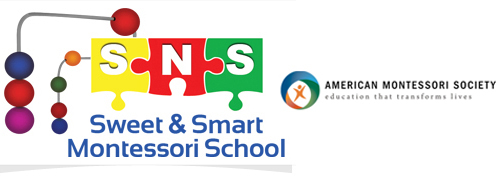




 By definition “ A playground, is a place with a specific design for children to be able to play there. It may be indoors but is typically outdoors. Some playgrounds often have recreational equipment such as the seesaw, merry-go-round, swing set, slide, jungle gym, chin-up bars, sandbox, spring, monkey bars, overhead ladder, trapeze rings, playhouses, and mazes, many of which help children develop physical coordination, strength, and flexibility, as well as providing recreation and enjoyment.” When I was teaching I always wanted to have a playground where the children could have an extension from the inside, a place for the children where they could have things to do. Not always the children are in the mood for be running or chasing each other, which I know they love to do it. Sometimes they just want to do something quieter and enjoy to be outside. That’s why we designed a playground that meet all this. In our playground, the children can choose from more than 20 activities. We have practical life lessons where they can wash a toy boat or a baby, or maybe do some pouring or sorting. We have for the gross motor skills, walking shoes, walking on a wood beam, and many other different lessons. The can paint or maybe do some arts if they feel this is what they want. If they want to do some sand, they can just jump in the sand box and play in there. Maria Montessori had a quote “ A child needs freedom within limits” based on that we want to follow the child instinct, and helping him with some discipline to make his own decisions.
By definition “ A playground, is a place with a specific design for children to be able to play there. It may be indoors but is typically outdoors. Some playgrounds often have recreational equipment such as the seesaw, merry-go-round, swing set, slide, jungle gym, chin-up bars, sandbox, spring, monkey bars, overhead ladder, trapeze rings, playhouses, and mazes, many of which help children develop physical coordination, strength, and flexibility, as well as providing recreation and enjoyment.” When I was teaching I always wanted to have a playground where the children could have an extension from the inside, a place for the children where they could have things to do. Not always the children are in the mood for be running or chasing each other, which I know they love to do it. Sometimes they just want to do something quieter and enjoy to be outside. That’s why we designed a playground that meet all this. In our playground, the children can choose from more than 20 activities. We have practical life lessons where they can wash a toy boat or a baby, or maybe do some pouring or sorting. We have for the gross motor skills, walking shoes, walking on a wood beam, and many other different lessons. The can paint or maybe do some arts if they feel this is what they want. If they want to do some sand, they can just jump in the sand box and play in there. Maria Montessori had a quote “ A child needs freedom within limits” based on that we want to follow the child instinct, and helping him with some discipline to make his own decisions.